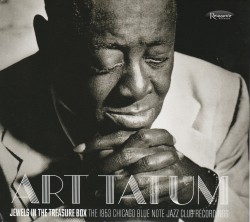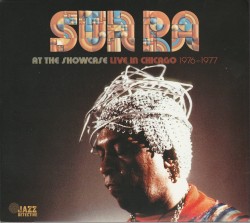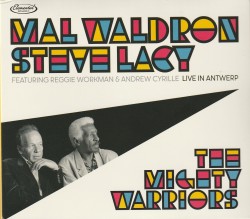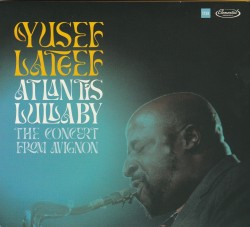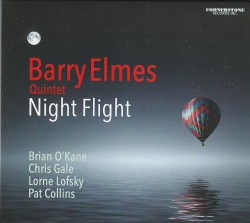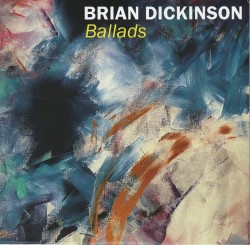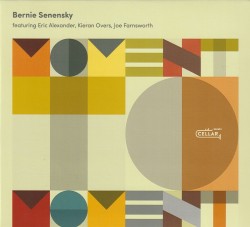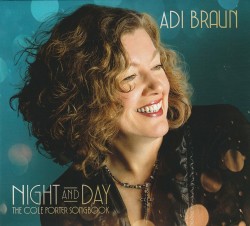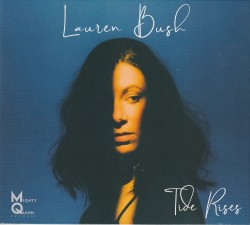Something in the Air | Why One Isn’t the Loneliest Number - June 2024
As albums and live performances of creative music by solo instrumentalists become increasingly common, the novelty factor has almost completely disappeared. Instead the technical skills and original concepts of the players during these mostly improvisational sets become crystal clear, especially as the listener notes which strategies are used to create memorable sessions.
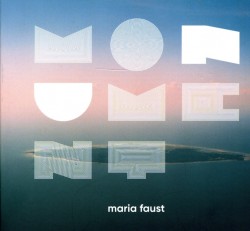 For instance, MOnuMENT (Bush Flash Records BUFCD 2201 mariafaust.com) by Estonian alto saxophonist Maria Faust, was recorded within various spaces of Kuressaare, a 14th century castle on the Estonian island of Saaremaa. Yet not only do the 14 tracks reflect the spatial qualities of the Gothic structure, but her use of affiliated electronic pedals also allows her to multiply, meld and mutate her output so that the aural textures can sound like several saxophones. This is especially pronounced on Fox Hole, where rhythmic pushes and ambulatory motion integrate short and long reed tones to the extent that Faust sounds as if she’s a multi-pitched saxophone section on her own. Variations of this are heard elsewhere. Man consists of a tremolo organ-like pulse which inflates to bounce off the stone walls and concludes with massive pulses that sound like all the organ’s ranks are simultaneously in use. At other points she’ll render her tones into elevated-turret brief bites and squeaks that undulate separately and in tandem until they blow away; or as on Waltzing Dust, expose lyrical trilling whose gentleness contrasts with the thick immovable stones around her. On a couple of occasions, notably on Moat, she vocalizes through her horn, adding bel canto hums alongside reed smears. All these unique abilities are put to use in splendid fashion on Fort. The processed sounds make it appear as if an entire saxophone section from soprano to bass is riffing below her as Faust’s alto saxophone honks and tongue slaps are heard at the same time as vocalized whoops. Finally as the tones shriek upwards they ricochet against the ancient masonry, ricochet back and are embedded among the reed textures.
For instance, MOnuMENT (Bush Flash Records BUFCD 2201 mariafaust.com) by Estonian alto saxophonist Maria Faust, was recorded within various spaces of Kuressaare, a 14th century castle on the Estonian island of Saaremaa. Yet not only do the 14 tracks reflect the spatial qualities of the Gothic structure, but her use of affiliated electronic pedals also allows her to multiply, meld and mutate her output so that the aural textures can sound like several saxophones. This is especially pronounced on Fox Hole, where rhythmic pushes and ambulatory motion integrate short and long reed tones to the extent that Faust sounds as if she’s a multi-pitched saxophone section on her own. Variations of this are heard elsewhere. Man consists of a tremolo organ-like pulse which inflates to bounce off the stone walls and concludes with massive pulses that sound like all the organ’s ranks are simultaneously in use. At other points she’ll render her tones into elevated-turret brief bites and squeaks that undulate separately and in tandem until they blow away; or as on Waltzing Dust, expose lyrical trilling whose gentleness contrasts with the thick immovable stones around her. On a couple of occasions, notably on Moat, she vocalizes through her horn, adding bel canto hums alongside reed smears. All these unique abilities are put to use in splendid fashion on Fort. The processed sounds make it appear as if an entire saxophone section from soprano to bass is riffing below her as Faust’s alto saxophone honks and tongue slaps are heard at the same time as vocalized whoops. Finally as the tones shriek upwards they ricochet against the ancient masonry, ricochet back and are embedded among the reed textures.
Listen to 'MOnuMENT' Now in the Listening Room
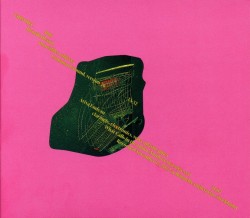 Similar in conception to Faust’s disc, but recorded in an urban space in Stockholm is Split Series Vol.2 (Frim Records FRIM 6 frim-stockholm.se). Australian clarinetist Aviva Endean’s What Calls in the Quiet (Moths and Stars live set) takes up one extended track with a local turntablist improvising on the other. Adding sounds from field recordings, lo-fi electronics, plastic pipes and her voice to her reed, metal and wood expertise, Endean literally inflates the textures of her concert program. Thus she’s able to apply more tones to her exposition than would emanate from a clarinet even with her experience using extended techniques. With the electronics creating a rumbling echo as a continuum, she stretches pure air squeezes, chalumeau-sourced reflux and shaky clarion flutters into a polyphonic exposition which is further intensified with the overtones of pre-recorded flute trills. Maintaining symmetry among the elements, the performance pivots at one moment into rattling cogwheel resonation which overcomes the voltage murmurs, or at the next to delicate, almost ethereal reed purrs. At mid-point an interlude of almost-endless circular breathing manages to be sturdy and straight-ahead, watery and bubbling and chirping and hissing in turn without upsetting the track’s linear flow. By the finale the unexpected rarity of the emphasized timbres during her recital which mates motor-grinding buzzing with airy squeezed split tones confirms singular sound logic – in both senses of the word.
Similar in conception to Faust’s disc, but recorded in an urban space in Stockholm is Split Series Vol.2 (Frim Records FRIM 6 frim-stockholm.se). Australian clarinetist Aviva Endean’s What Calls in the Quiet (Moths and Stars live set) takes up one extended track with a local turntablist improvising on the other. Adding sounds from field recordings, lo-fi electronics, plastic pipes and her voice to her reed, metal and wood expertise, Endean literally inflates the textures of her concert program. Thus she’s able to apply more tones to her exposition than would emanate from a clarinet even with her experience using extended techniques. With the electronics creating a rumbling echo as a continuum, she stretches pure air squeezes, chalumeau-sourced reflux and shaky clarion flutters into a polyphonic exposition which is further intensified with the overtones of pre-recorded flute trills. Maintaining symmetry among the elements, the performance pivots at one moment into rattling cogwheel resonation which overcomes the voltage murmurs, or at the next to delicate, almost ethereal reed purrs. At mid-point an interlude of almost-endless circular breathing manages to be sturdy and straight-ahead, watery and bubbling and chirping and hissing in turn without upsetting the track’s linear flow. By the finale the unexpected rarity of the emphasized timbres during her recital which mates motor-grinding buzzing with airy squeezed split tones confirms singular sound logic – in both senses of the word.
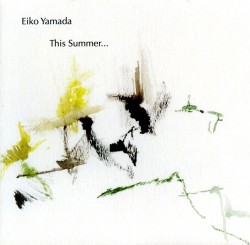 An even more precious demonstration of singular and atypical musical logic come from German- Japanese Eiko Yamada whose understated recital on soprano and bass recorders during This Summer (Hitorri 959 hitorri.bandcamp.com/album/this-summer) sounds nothing like the jaunty peeps usually heard from this simple antique woodwind played by amateurs or school children. Working her way from tonelessness to emphasized breaths, shaking hisses and metallic drones Yamada moves between the instruments, emphasizing thin penny-whistle-like tweets from one and basement level drones from the other. While her timbral detours include almost perfect replication of the sounds of nesting birds or spittle-encrusted flatulence whose reverberations could come from a kazoo, her flat-line exposition maintains consistency. Ingeniously by the improvisation’s final section she manages to output two interlaced but distinctive tones, a growly hum which resembles a motor-turning mechanism and an airy ethereal murmur. With the dual accents evolving in broken octaves maintaining individual tones as well as merging intermittently, her woodwind control is demonstrated. The singularity is confirmed when the piano plinks and patterns that join her second recorder recital seem entirely superfluous.
An even more precious demonstration of singular and atypical musical logic come from German- Japanese Eiko Yamada whose understated recital on soprano and bass recorders during This Summer (Hitorri 959 hitorri.bandcamp.com/album/this-summer) sounds nothing like the jaunty peeps usually heard from this simple antique woodwind played by amateurs or school children. Working her way from tonelessness to emphasized breaths, shaking hisses and metallic drones Yamada moves between the instruments, emphasizing thin penny-whistle-like tweets from one and basement level drones from the other. While her timbral detours include almost perfect replication of the sounds of nesting birds or spittle-encrusted flatulence whose reverberations could come from a kazoo, her flat-line exposition maintains consistency. Ingeniously by the improvisation’s final section she manages to output two interlaced but distinctive tones, a growly hum which resembles a motor-turning mechanism and an airy ethereal murmur. With the dual accents evolving in broken octaves maintaining individual tones as well as merging intermittently, her woodwind control is demonstrated. The singularity is confirmed when the piano plinks and patterns that join her second recorder recital seem entirely superfluous.
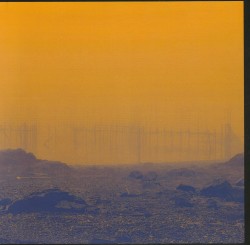 Solo explorations with horns doesn’t stop with woodwinds either. Using electronics and extended techniques, both Nicole Rampersaud and Hilde Marie Holsen create uncommon and cerebral paths for their trumpets. An ex-Torontonian, now-based in rural New Brunswick, Rampersaud’s 11 tracks on Saudade (Ansible Editions 008 ansibleeditions.bandcamp.com) are each invested with the same invention and proficiency no matter the length. While electronics allow her to flange, double track, overlap and deconstruct timbres, she doesn’t depend on plugged in extensions to create. Probably the best examples of this are the three sequential Concurrent Panoramas. Beginning with bagpipe-like timbres respired in and out into a portamento melody, the affiliated bass drone creates an ostinato, as splices of sour notes, flattened tones and half-valve whines judder decisively above it. By Concurrent Panorama 3, the resolution involves piccolo-trumpet elevated triplets intersecting with an oboe-like snarl as the stop/start waveforms vibrate below to cushion the elevated brass layer above. This layering and overlapping live and processed timbres is another method of expression, as is when Rampersaud cunningly integrates static crackles into the expositions. Suggestions of mellow French horn-like tones, ascending bugle-like peeps and tuba-resembling burps highlight some of the other tracks. So do unexpected turns, as on Nor Foresaking where sudden brass peeps cut across an aural landscape, already defined by overlapping and suturing distant cries and patterns. Rampersaud can build an entire track out of mouthpiece spits and horn shakes as on Erasure. Or in contrast, complete the session with the extended Interstitials that builds a sound edifice from human and processed whistles, concentrated toneless breaths and watery valve flutters until it climaxes and vanishes. Each piece confirms that a specific trumpet vocabulary is being defined and disseminated.
Solo explorations with horns doesn’t stop with woodwinds either. Using electronics and extended techniques, both Nicole Rampersaud and Hilde Marie Holsen create uncommon and cerebral paths for their trumpets. An ex-Torontonian, now-based in rural New Brunswick, Rampersaud’s 11 tracks on Saudade (Ansible Editions 008 ansibleeditions.bandcamp.com) are each invested with the same invention and proficiency no matter the length. While electronics allow her to flange, double track, overlap and deconstruct timbres, she doesn’t depend on plugged in extensions to create. Probably the best examples of this are the three sequential Concurrent Panoramas. Beginning with bagpipe-like timbres respired in and out into a portamento melody, the affiliated bass drone creates an ostinato, as splices of sour notes, flattened tones and half-valve whines judder decisively above it. By Concurrent Panorama 3, the resolution involves piccolo-trumpet elevated triplets intersecting with an oboe-like snarl as the stop/start waveforms vibrate below to cushion the elevated brass layer above. This layering and overlapping live and processed timbres is another method of expression, as is when Rampersaud cunningly integrates static crackles into the expositions. Suggestions of mellow French horn-like tones, ascending bugle-like peeps and tuba-resembling burps highlight some of the other tracks. So do unexpected turns, as on Nor Foresaking where sudden brass peeps cut across an aural landscape, already defined by overlapping and suturing distant cries and patterns. Rampersaud can build an entire track out of mouthpiece spits and horn shakes as on Erasure. Or in contrast, complete the session with the extended Interstitials that builds a sound edifice from human and processed whistles, concentrated toneless breaths and watery valve flutters until it climaxes and vanishes. Each piece confirms that a specific trumpet vocabulary is being defined and disseminated.
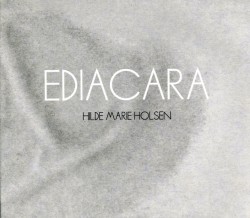 Norwegian Holsen’s three improvisations on Ediacara (Pelun PELUN CD 001 hildeholsen.com) contain similar resourcefulness and creativity as Rampersaud’s and as much use of extended techniques and electronic processing as on the Canadian’s disc. However, where Rampersaud’s formulations are usually sparse and pointed, Holsen’s are packed and more lyrical. This is especially true of the concluding Ordovicium, where from the top watery textures are mixed with tongue stops that reference mechanized pulsations. Although the multiphonics become increasingly claustrophobic so that textures begin to resemble those of an orchestral choir, timbres reflecting back onto themselves with vinyl needle-drop lacerations are eventually superseded by a mellow tone. The finale is as simple and moderated as it is linear. It’s the same with the other pieces, especially the protracted title track. Extended and uncommon brass techniques are exhibited and share space with hisses, crackles and static from the electronic oscillations. No matter how many turns there are to polyphonic timbres resembling shrill sirens, French horn-like mid-range notes or Baroque trumpet-like dusky tones – as well as tongue stops, squeaking triplets and distended breaths – they’re underscored by moderated textures. Evolution may be in broken octaves, but overall the stacked timbres are often rearranged into narratives that reflect melodiousness as well as multiphonics.
Norwegian Holsen’s three improvisations on Ediacara (Pelun PELUN CD 001 hildeholsen.com) contain similar resourcefulness and creativity as Rampersaud’s and as much use of extended techniques and electronic processing as on the Canadian’s disc. However, where Rampersaud’s formulations are usually sparse and pointed, Holsen’s are packed and more lyrical. This is especially true of the concluding Ordovicium, where from the top watery textures are mixed with tongue stops that reference mechanized pulsations. Although the multiphonics become increasingly claustrophobic so that textures begin to resemble those of an orchestral choir, timbres reflecting back onto themselves with vinyl needle-drop lacerations are eventually superseded by a mellow tone. The finale is as simple and moderated as it is linear. It’s the same with the other pieces, especially the protracted title track. Extended and uncommon brass techniques are exhibited and share space with hisses, crackles and static from the electronic oscillations. No matter how many turns there are to polyphonic timbres resembling shrill sirens, French horn-like mid-range notes or Baroque trumpet-like dusky tones – as well as tongue stops, squeaking triplets and distended breaths – they’re underscored by moderated textures. Evolution may be in broken octaves, but overall the stacked timbres are often rearranged into narratives that reflect melodiousness as well as multiphonics.
Each of these discs reflects how different musicians probe the intricacies of solo productions. Their sophistication in process and performance augurs well for many other players to make similar sound odysseys.


